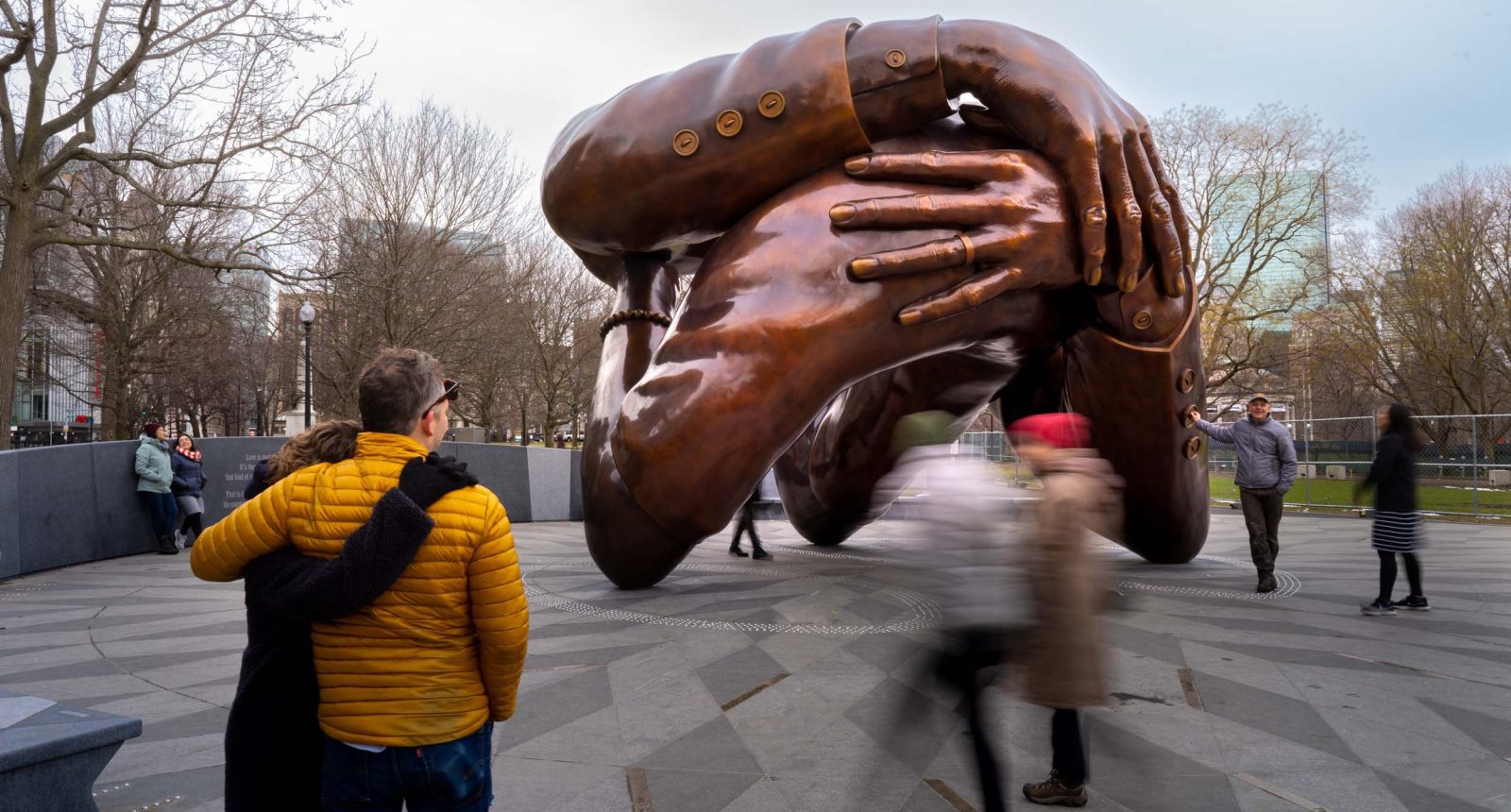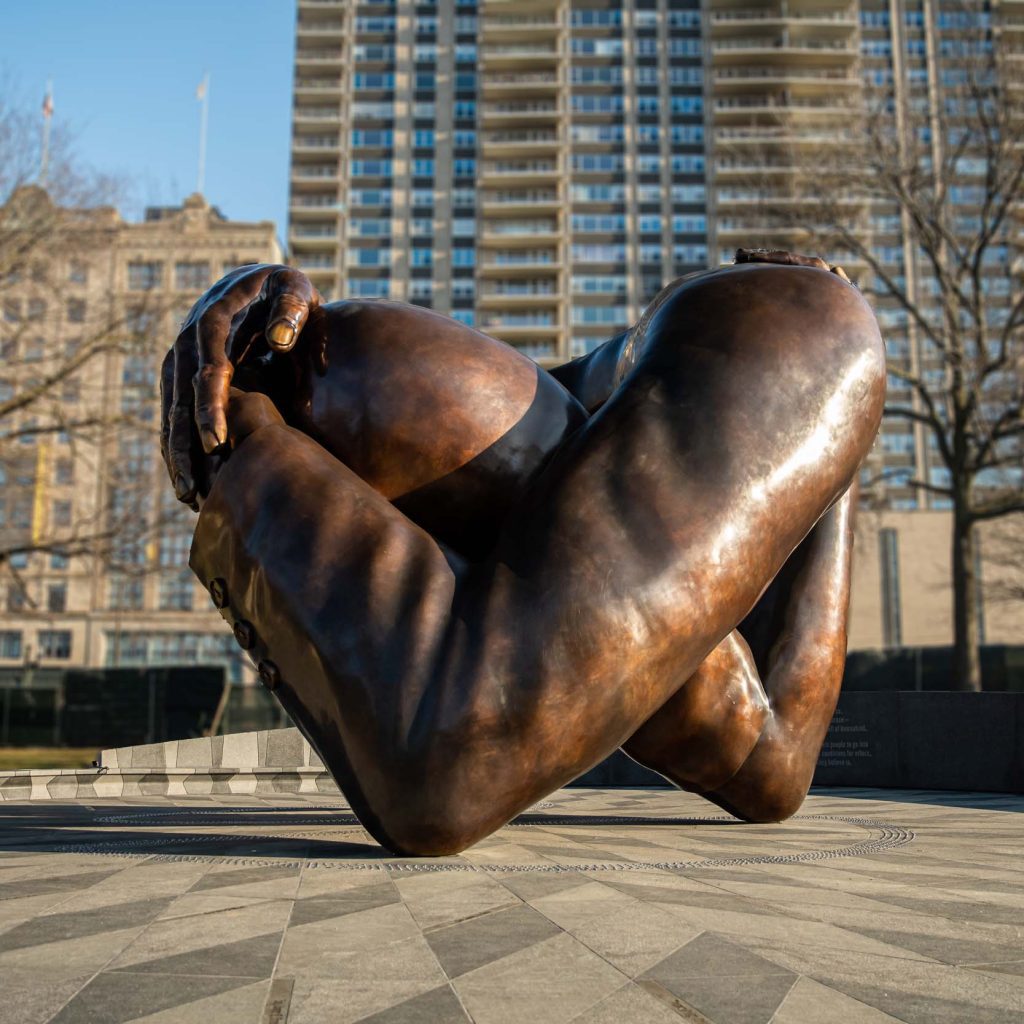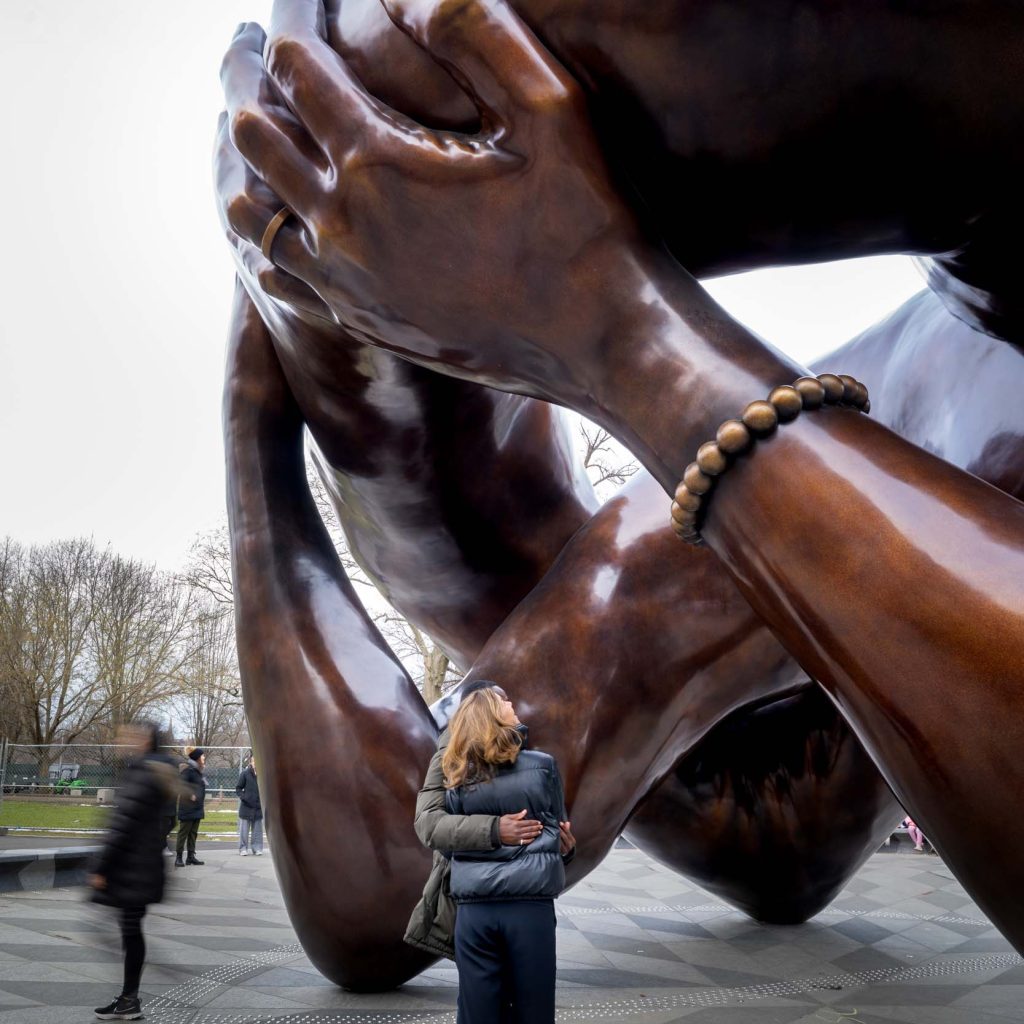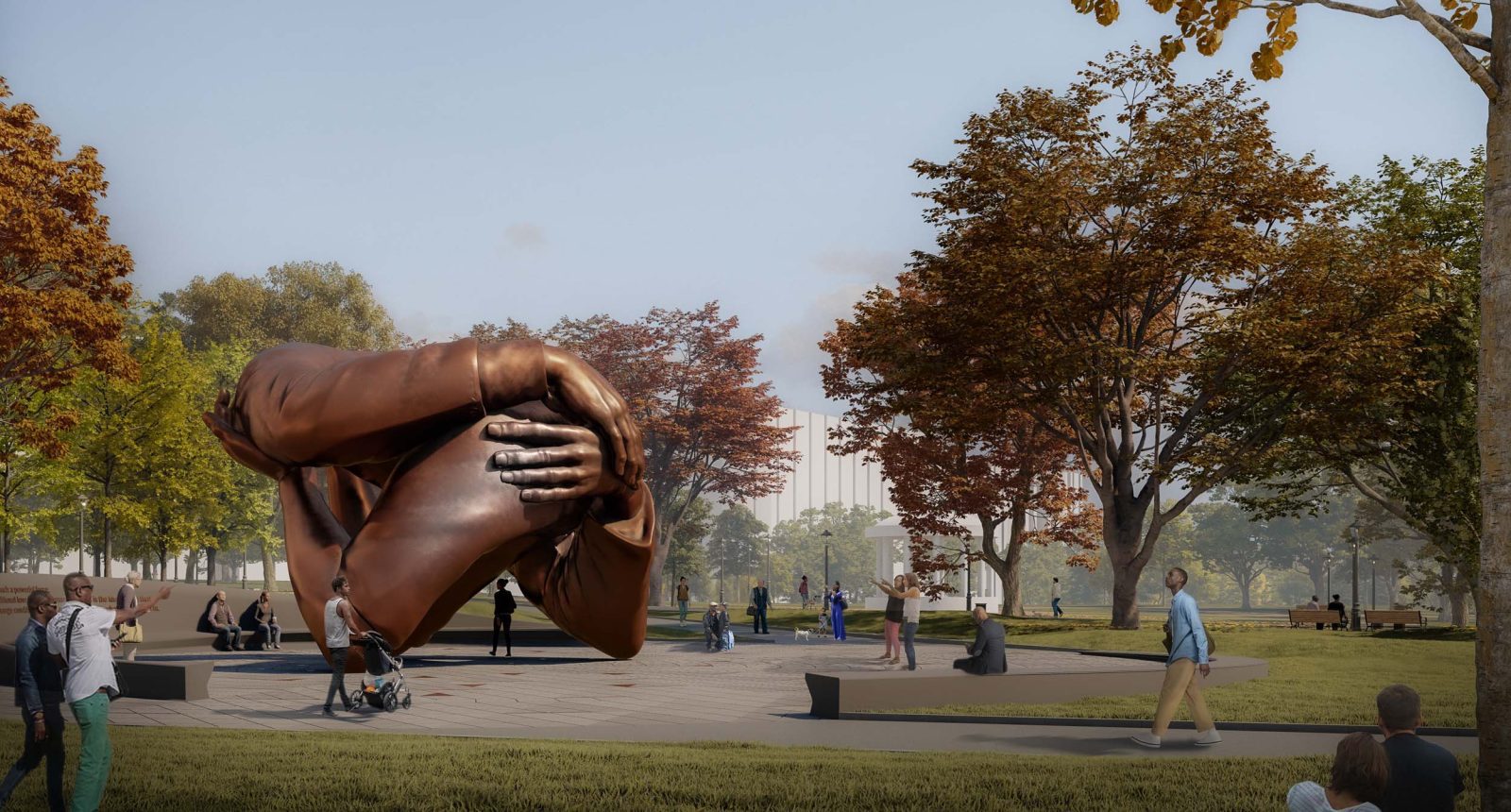The Embrace

The Embrace is an abstract public art piece by African American sculptor Hank Willis Thomas that was installed on the Boston Common in a purpose-built plaza designed by MASS Design Group. The piece honors the legacy of Dr. Martin Luther King by capturing and reinterpreting the iconic hug between him and his wife, Coretta Scott King, after he was awarded the Nobel Peace Prize in 1964. This was the first new memorial to be constructed on Boston Common in over 30 years.


Measuring over 22 feet high, the sculpture’s two hugging arms invite visitors to stand within and below them so they, too, may become part of this loving, historic embrace. In acknowledgement of Dr. King’s message of inclusivity, the design team recruited KMA to ensure this experience would be available to all visitors, including those with visual impairments who might inadvertently walk into the upper portions of the arms springing from the plaza surface.

KMA helped guide this meaningful project in its final stages, facilitating working sessions among the architects, media designers, and—most importantly—experts from the blind community to create appropriate markers so visitors with low vision could safely access the structure’s interior. Key to this collaboration was the construction of a tabletop tactile model of the proposed plaza and memorial design through which the design team could explain the issues to blind experts, and through which those experts could evaluate and improve upon the team’s proposed solutions.
In the end, the team installed two rings of stainless-steel detectable warning dimples encircling the areas of lower headroom within the statue’s interior. Because these warnings typically indicate the presence of vehicular traffic, information was carefully crafted for the website, for access through QR codes found in on-site signage, and for Braille markers at the entries to the plaza explaining the intent of the detectable warnings. Because this approach was not in strict compliance with local accessibility requirements, KMA also assisted the team in applying for a variance from the Massachusetts Architectural Access Board to install the detectable warnings as designed. The Board, recognizing the ingenuity of the approach developed in collaboration with the blind community, not only granted the variance but issued a formal commendation to the team—a very uncommon action by a normally reserved Board.
Photo courtesy of MASS Design Group
Rendering courtesy of MASS Design Group


